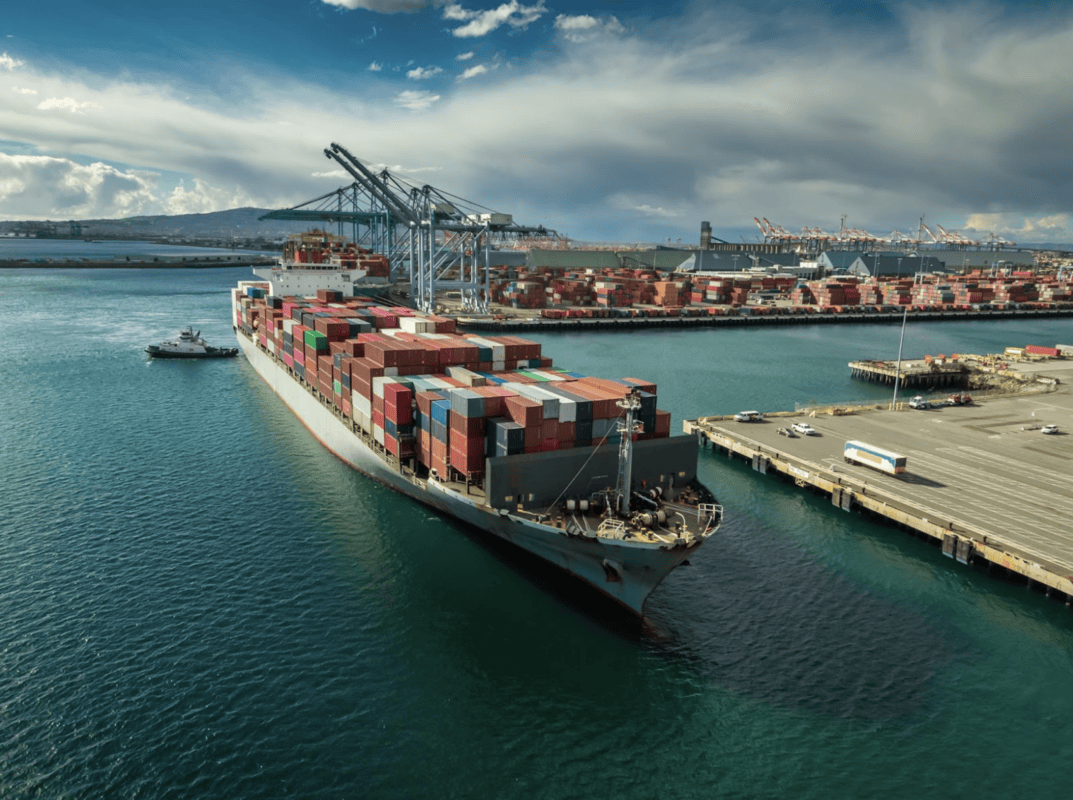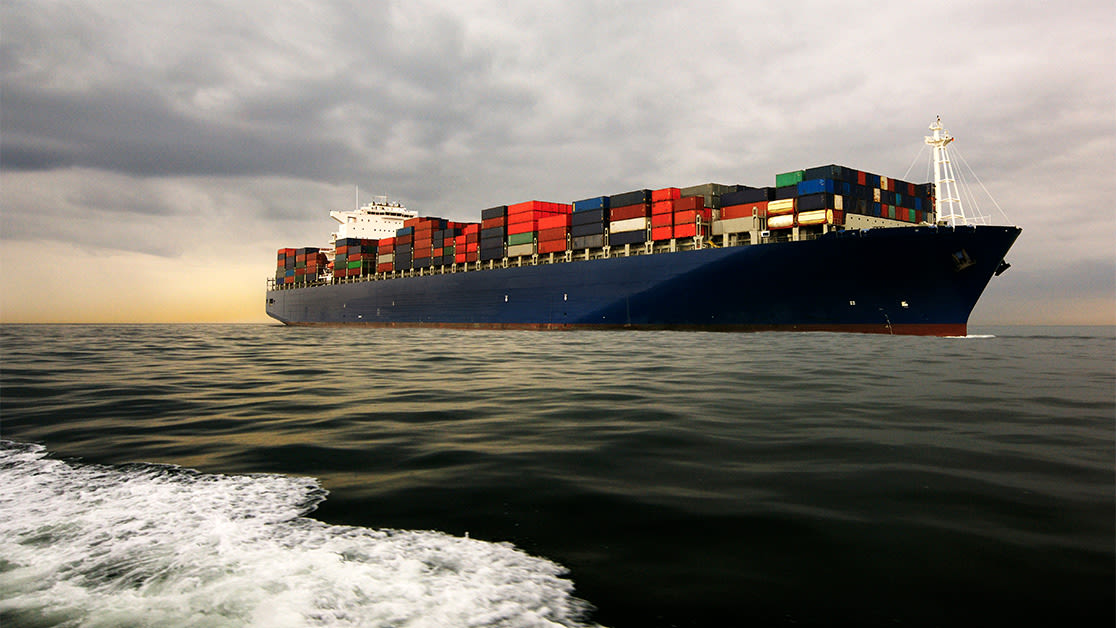
June 20, 2025
The Strait of Hormuz: Strategic Artery Under Pressure
Tags:

June 20, 2025
The Strait of Hormuz remains one of the most critical arteries in global trade, facilitating the movement of approximately 20 million barrels of oil per day, roughly one-fifth of global consumption and around 20% of global liquified natural gas shipments. It also supports more than 33 million TEUs annually through Gulf ports such as Jebel Ali and Abu Dhabi, accounting for more than 3% of global container traffic [Source: US Energy Information Administration]. Despite the recent escalation in tensions between Iran and Israel, which has included missile exchanges and strikes on key energy infrastructure, cargo flows through Hormuz remain largely uninterrupted. On June 15, for example, 111 cargo ships transited the strait, down only slightly from 116 earlier that week [Source: gCaptain via Bloomberg]. However, the maritime industry is on high alert, with INTERTANKO and other associations underscoring the strait’s irreplaceable role in global energy logistics. Specifically, China is the biggest purchaser of Iranian oil, so they are eager to keep the strait open [Source: Reuters].
Rising Costs: Freight Rates and Insurance Premiums Surge
The conflict has already had pronounced effects on shipping economics. Very Large Crude Carrier (VLCC) benchmark freight rates on the Gulf-Asia route spiked more than 20% in a single day, while clean product tanker rates from the Middle East to Europe jumped by roughly 30%, with shipping costs for a typical diesel or gasoline cargo climbing from $3.3 to $3.5 million, to around $4.5 million [Source: Reuters]. Insurance markets reacted just as strongly: war-risk premiums have surged 300-400%, with underwriters quoting up to $8 per barrel in added coverage costs for voyages through Hormuz translating to millions in extra fees per vessel, as a VLCC typically carries 2 million barrels, or about $16 million in added insurance alone. Charter hire rates remain elevated, as carriers hesitate to release tonnage in such a volatile environment.
Ripple Effects on Global Logistics Networks and Supply Chains
Beyond the immediate region, the potential impact to Hormuz is rippling through global logistics in more subtle ways. One impact is on network capacity and transit times. With little chance the Red Sea and Suez will reopen to full capacity soon, container traffic to the Middle East is increasingly disrupted. Carriers may skip Gulf ports altogether, offloading cargo elsewhere, or risk vessels getting stuck in the region if tensions escalate further. This effectively reduces available capacity (fewer trips per year per ship due to longer voyage times) and can lead to scheduling upheavals. Shippers have already been coping with delays since late 2023 because of the Red Sea diversions, which add roughly 8-10 days to a typical Asia-Mediterranean trip. That situation persists, and now the possibility of closing Hormuz could add further strain. Carriers may need to reshuffle vessel rotations, possibly dedicate extra ships to maintain weekly schedules despite longer routes, or consolidate port calls. In the short-term, many are holding off on drastic new changes, as noted, Gulf port calls are still happening, and Suez Canal transits remain unchanged. But contingency plans are ready. We could see last-minute blank sailings (canceled ship departures) on certain Middle East loops if risks spike, or the omission of ports like Bahrain or Kuwait from a service to keep ships farther from potential danger. Even scheduled timing is affected: some vessels are slow steaming or adjusting arrival times so that they pass through choke points like Hormuz at daylight with naval escorts nearby, rather than at night.
Air Freight Capacity Tightens
Another side effect is capacity tightening and higher demand for alternative modes of transport. Whenever ocean freight transport becomes unreliable or slower, some shippers turn to air freight for urgent cargo. We’re already seeing stress in regional air logistics. Israel’s main airport shut down to civilian flights during the initial missile salvos, disrupting inbound and outbound air cargo. With both Israeli and Iranian airspace effectively off-limits and widespread electronic jamming in the region, airlines are being forced to take long detours, further extending transit times.In the broader Middle East, sporadic airspace closures (like in Jordan’s skies during military activity) have caused some flight reroutings. Many shippers are also turning to sea-air services from Asia Pacific via Dubai to reduce costs. But this routing is now highly vulnerable to disruption. If more shippers decide to expedite critical goods by air to avoid potential sea delays, this could tighten air freight capacity and raise rates out of hubs in the Gulf, Europe, and South Asia. It hasn’t happened on a large scale yet, but forwarders are monitoring the situation.
Alternate Ports and Route Realignments
A disruption in Hormuz doesn’t only affect Gulf ports—it could send cargo cascading to other hubs. For instance, if Dubai’s Jebel Ali (the region’s biggest transshipment port) sees reduced connectivity, other ports in India or East Africa might pick up volume as alternate relay points. Shipping alliances might reorganize loops to ensure, say, Indian west coast ports become interchange points for cargo that would normally go through Gulf hubs. Already, analysts suggest that if Hormuz were closed, carriers would rely more on ports like Mumbai (Nhava Sheva) or Colombo to connect Far East cargo with Middle East destinations via feeder, bypassing the Gulf. This could lead to capacity crunches and congestion at those alternate ports, which are not used to handling such overflow. Even the Suez Canal’s role could shift, paradoxically, while Suez is the shorter route, carriers avoid it due to Red Sea risk; but if Hormuz closed entirely, some trade that normally goes Gulf-Asia might have to go out via the Red Sea and Suez if protected, or via pipelines to the Red Sea. In any case, longer voyages and port bottlenecks reduce effective global shipping capacity, which tends to firm up freight rates generally. Some industry observers note that carriers, facing these uncertainties, are holding onto tonnage rather than idling ships, contributing to higher charter and freight rate levels.
A Test of Supply Chain Resilience
Finally, the crisis puts a spotlight on resilience in supply chains. Companies that source oil, petrochemicals, or commodities through the Middle East are revisiting contingency plans. We may see increased use of stockpiles and strategic reserves, for example, countries in Asia that import Gulf oil are readying to tap reserves if shipments slow. Manufacturers reliant on Middle Eastern inputs (like plastics or aluminum from Gulf states) might pre-order inventory in case lead times grow. On the flip side, Gulf exporters are exploring alternate routes: Saudi Arabia, for one, can send some oil via its Red Sea pipeline to avoid Hormuz, and the UAE can use its pipeline to Fujairah on the Gulf of Oman. These alternatives only cover a fraction of normal volumes, but they are part of the resilience strategy. In shipping, new patterns could emerge if the crisis drags on. We might see regional carriers (less likely to be targeted) taking a larger share of intra-Middle East trade, while global carriers focus on safer long-haul segments. In essence, the Hormuz standoff is a test of the global logistics system’s agility. So far, it has absorbed the shock with minor tremors (a few days’ delay here, a premium surcharge there). But if the situation worsens, we could witness a more profound reshaping with trade lanes redrawn, costs re-evaluated, and supply chains re-routed to keep world commerce moving.
Flexport is actively monitoring the situation and developing contingency plans across our modes of transportation. To learn more, get in touch with a member of our team.
About the Author

June 20, 2025




